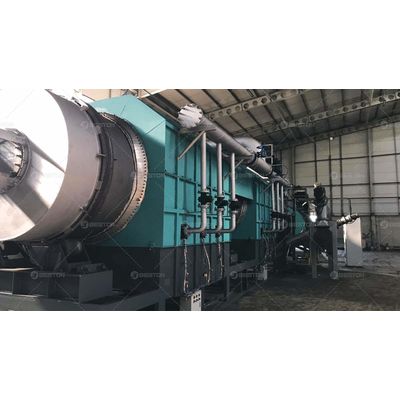


Treatment of Waste Biomass from Crop Cultivation: Making Charcoal
In the vast realm of agriculture, the disposal of waste biomass generated during crop cultivation stands as a critical challenge. This article delves into the intricacies of treating waste biomass, focusing on the innovative approach of making charcoal. From the types of waste biomass to cutting-edge charcoal-making techniques and the environmental benefits of the end product, this exploration aims to shed light on a sustainable solution for agricultural residues.
Introduction
Waste biomass from crop cultivation encompasses various organic materials left after harvesting. The proper management of this biomass is paramount, not only for waste reduction but also for harnessing its potential. One sustainable and transformative method is the conversion of agricultural residues into charcoal. This article explores the significance of this process and its role in sustainable agriculture.
Types of Waste Biomass
1. Various Waste Biomass Materials
Waste biomass from crop cultivation spans a spectrum of materials, including agricultural residues like stalks and leaves, by-products such as husks and shells, and organic waste from crop processing. Understanding the diverse nature of these materials is crucial for effective waste management strategies.
2. Differentiation Between Biomass Categories
Agricultural residues, by-products, and organic waste have distinct characteristics and potential applications. Recognizing these differences allows for targeted and efficient utilization, ensuring that each type of waste biomass contributes to the overall sustainability of crop cultivation.
Charcoal-Making Techniques
1. Traditional vs. Modern Techniques
Charcoal production has evolved from traditional methods to modern, efficient techniques. While traditional methods often involve simple pyrolysis, modern techniques leverage advanced technology to optimize the process, increase yield, and reduce environmental impact. For example, rice husk carbonizer can efficiently produce rice husk charcoal in an eco-friendly way.
2. Pyrolysis as a Sustainable Method
Pyrolysis, a thermochemical process involving the decomposition of organic materials in the absence of oxygen, emerges as a sustainable and efficient method for converting waste biomass into charcoal. The controlled heating of biomass results in the production of biochar, a valuable soil amendment, and syngas, a clean energy source.
Benefits of Charcoal as an End Product
1. Agricultural Applications of Biochar
Biochar, a carbon-rich product of the charcoal-making process, finds valuable applications in agriculture. Its porous structure enhances soil water retention, nutrient availability, and microbial activity, contributing to improved crop yield and soil health.
2. Charcoal as a Clean Energy Source
Beyond its role in agriculture, charcoal serves as a clean and renewable energy source. The syngas produced during pyrolysis can be utilized for heat and power generation, offering an environmentally friendly alternative to traditional fossil fuels.
Environmental Impact and Sustainability
1. Mitigating Greenhouse Gas Emissions
The conversion of waste biomass into charcoal plays a crucial role in mitigating greenhouse gas emissions. By sequestering carbon in biochar and displacing the need for fossil fuels, this process aligns with sustainability goals, contributing to climate change mitigation.
2. Circular Economy Principles
Charcoal production from waste biomass embodies circular economy principles by transforming a potential environmental burden into valuable resources. This closed-loop approach not only minimizes waste but also creates economic opportunities within the agricultural and energy sectors.
Challenges and Future Innovations
1. Addressing Challenges in Waste Biomass Treatment
While the treatment of waste biomass through charcoal production holds promise, challenges such as feedstock variability and energy consumption require attention. Ongoing research and development efforts aim to address these challenges, ensuring the continued improvement of waste biomass utilization.
2. Emerging Technologies and Innovations
The future of waste biomass treatment and charcoal production lies in emerging technologies and innovations. From decentralized charcoal making machine to integrated systems that maximize resource recovery, staying abreast of these developments is crucial for advancing the sustainability of agriculture.
In conclusion, the treatment of waste biomass from crop cultivation through charcoal-making offers a multifaceted solution. It not only addresses the challenge of waste management but also provides valuable resources for agriculture and energy. As we navigate the complexities of modern agriculture, embracing sustainable practices such as biomass conversion into charcoal becomes integral to a resilient and eco-friendly future.
